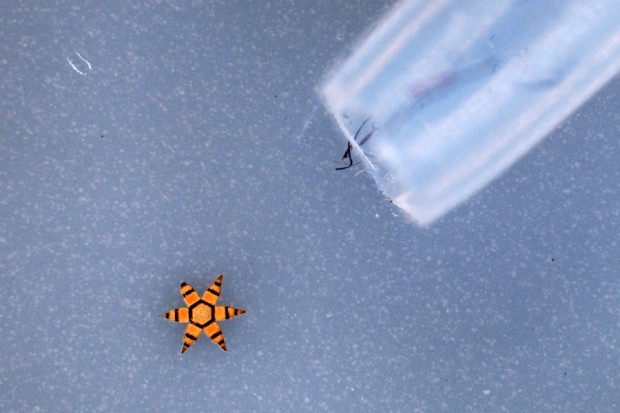When a doctor requires a tissue sample to help provide a more detailed medical diagnosis, they have to use traditional tools like forceps and a scalpel. This process is referred to as a biopsy in the medical field, of which there are several different types.
Thanks to developments in recent technology, it looks like doctors may be able to soon rely on “mu-grippers” or tiny electronic devices designed to collect tissue samples (mu stands for micro in Greek). The devices are so small that internal impact would be minimal, and a unique heat activated technology allows them to remain free of batteries, wires or tethers. They’re essentially metal discs, about 300 micrometers in size (making them a little too big to be dubbed as nanotechnology), and they serve one very specific purpose. Thanks to unique metal arms, coated in heat-sensitive polymer, the microgrippers are able to collect tiny bits of tissue which can then be used to provide a diagnosis quickly and more efficiently.
The microgrippers are made entirely of nickel, but the unique polymer coating permits them to contract and expand under various conditions, ultimately allowing the devices to close tightly on bits of tissue. Because of their metal composition they’re obviously magnetic which makes them a lot easier to extract once the job is finished.
Unfortunately, that’s one of the current problems with the microgrippers. After releasing a swarm of them into a source, they can be retrieved with a magnetic catheter but some of the units may actually end up being left behind. It can be compared to dropping sharp objects on a carpet or rug, even with the right tools cleanup can still be quite difficult.
Dr. Gracias from John Hopkins University developed the tiny microgrippers, and his team has also tested the remarkable devices several times. During one of the tests, his team used a pig’s colon as a model because of how similar it is to a human colon.
Another member of the research team, Florin M. Selaru talked about how the project still has further to go until the devices can be used on humans.
“The next step is improving how we deploy the grippers. The concept is sound, but we still need to address some of the details. The other thing we need to do is thorough safety studies.”
The team is currently seeking help from Biotechnology investors and as such they’ve applied for grants to help fund the continuation of the research project. It seems we’re still a few years away from seeing technology used like this in the wild, but it’s still remarkable, nonetheless.
Oh, and in case you’re wondering, the microgrippers have been compared to “dust,” that should provide a more reasonable example of their size.
[via John Hopkins University, Gizmag]

 Email article
Email article




